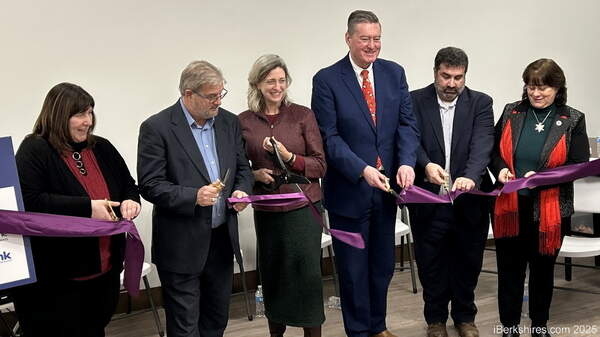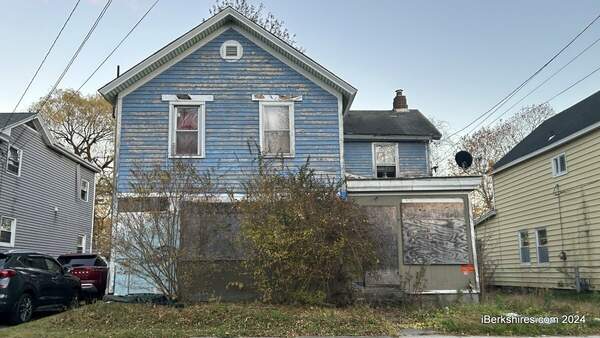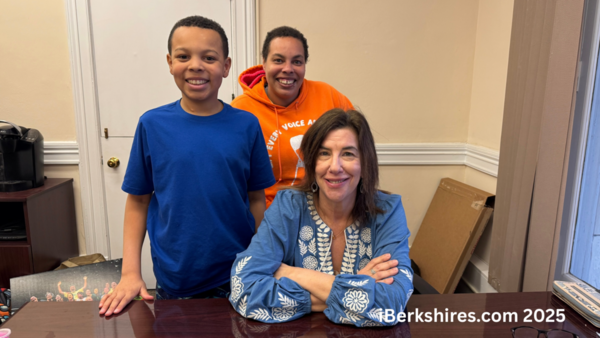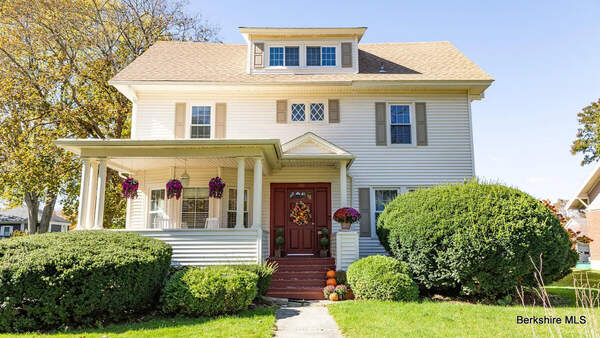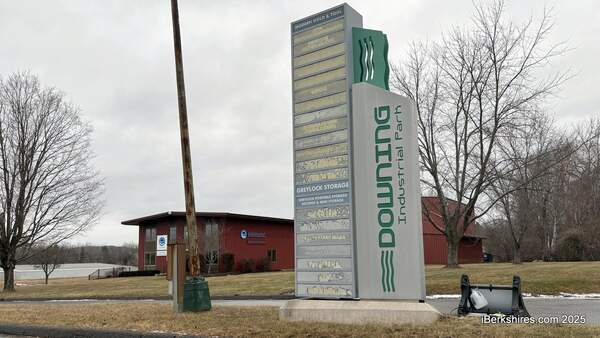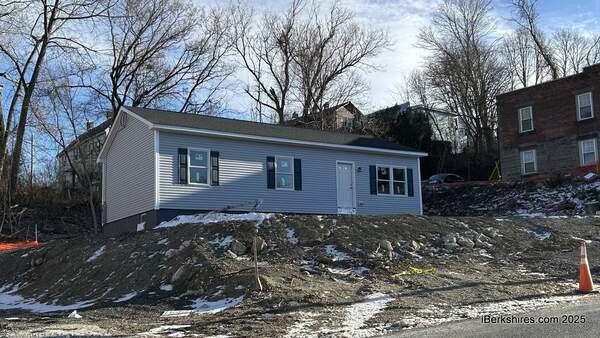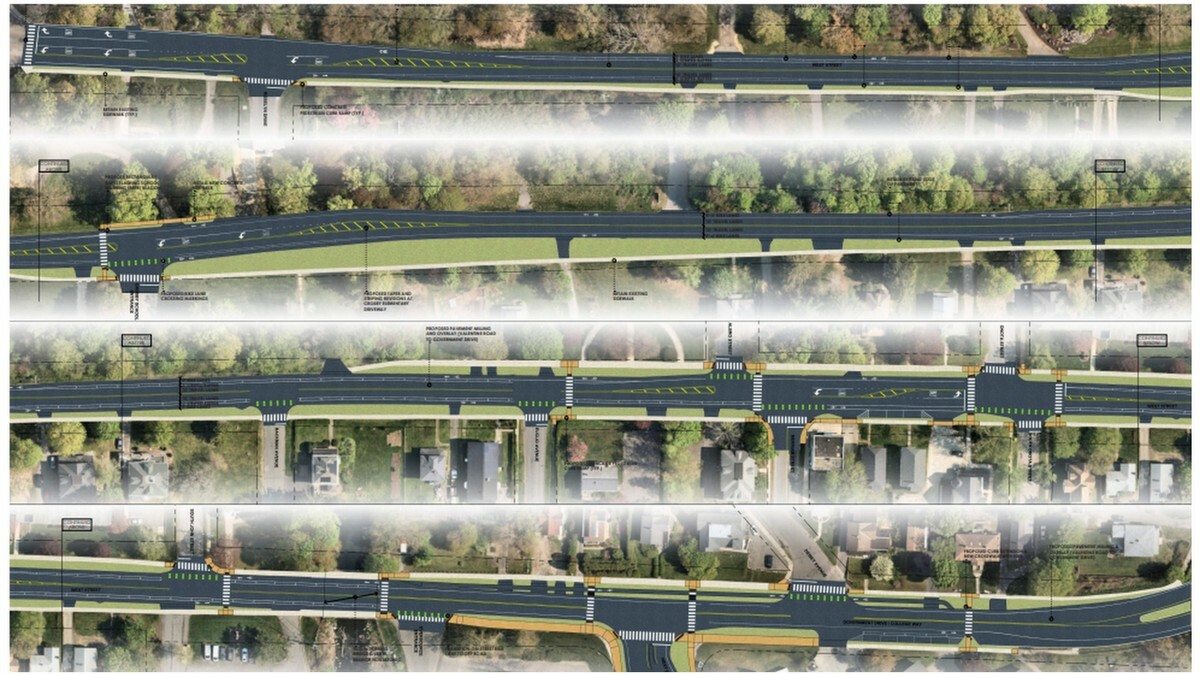
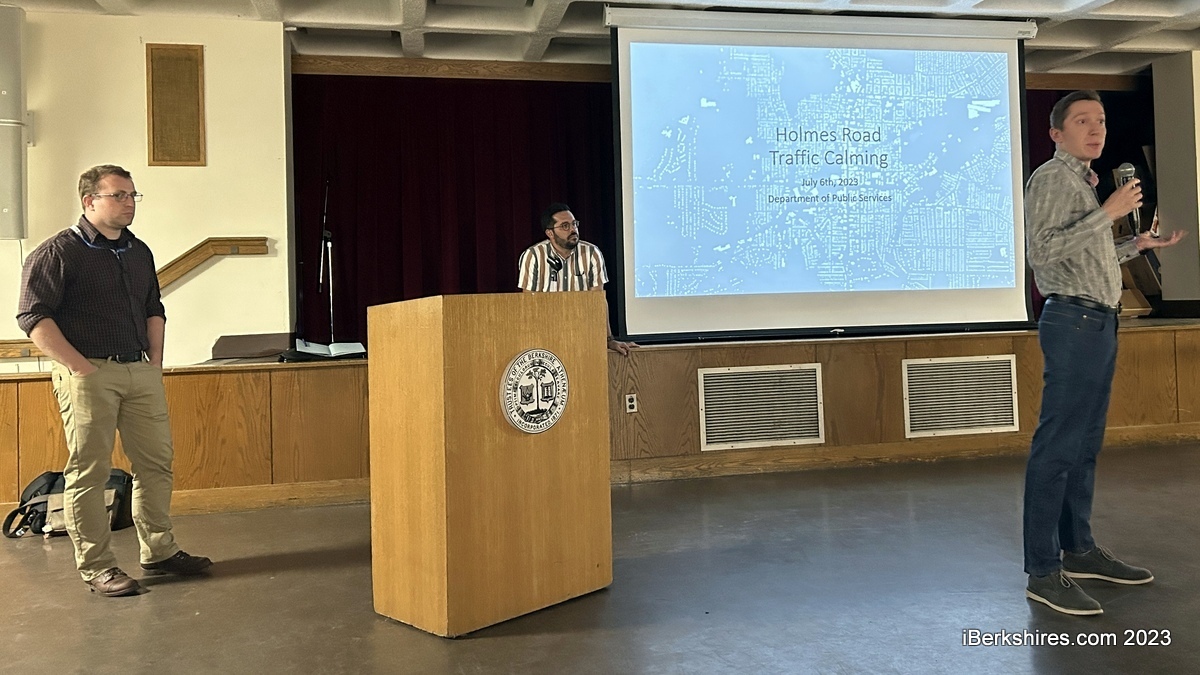
Pittsfield Residents Mull West Street/Holmes Road Changes
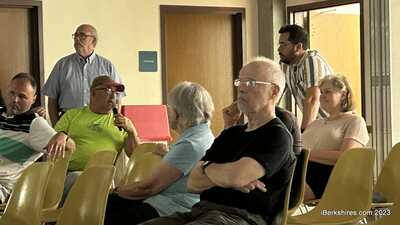 |
| Residents provide feedback on plans to make Holmes Road and West Street safer for pedestrians and bicyclists. |
PITTSFIELD, Mass. — Residents saw possible solutions for pedestrian safety concerns in two high-traffic corridors during a community meeting on Thursday.
The designs were for the stretch of road on Holmes Road between Williams Street and Elm Street and West Street from the intersection of Government Drive and College Way to Valentine Road. Both stretches have had pedestrian accidents including a fatality earlier this year on West Street.
The event, hosted by the city and the grass-roots Pittsfield Community Design Center, unveiled "fresh off the press" conceptual redesigns that improve safety for people walking, cycling, and driving.
"Today is just kind of a chance for looking at ideas, sharing concepts, nothing is set in stone, there are no shovels in the ground tomorrow or anything like that. It's kind of an opportunity for us to work together and start talking about ideas to make these intersections safer," PCDC organizer Nicholas Russo said to the receptive crowd at the Berkshire Athenaeum.
It was clear at Thursday's meeting residents see adequate crosswalks, sidewalks, and pedestrian lanes as a beacon for safety and walkability in their neighborhoods.
Earlier this year, members of the community held a walkout that urged city officials to prioritize safer streets after a pedestrian was killed crossing near Dorothy Amos Park on West Street.
"We did a walk in remembrance for Shaloon Milord who was struck and killed at this intersection back in January and we called on the city to really focus on this stretch and come up with design changes to make it safer," Russo said.
"This is the next result of this process to preview and give a kind of concept of what a new safer section of West Street could look like."
Proposed changes to the Holmes Road corridor include new Americans With Disabilities Act-compliant sidewalk ramps, rapid flashing beacons at the mid-block street crossings, raised crosswalks at Cambridge Avenue and Strong Avenue, replacement and repair of the existing sidewalks, extending sidewalk from Foote Avenue to Grace Terrace, and reconfiguring travel lanes from a 12-foot car lane with a three-foot shoulder to a 10-foot car lane with a five-foot bicycle lane.
The goal is to improve pedestrian safety, formalize bike lanes in line with the city's Bike Facilities Master Plan, and reduce vehicle speeds.
Curb to curb, the road will remain the same size.
"It's no change there," City Engineer Tyler Shedd said. "It is just what belongs to who in the roadway."
Melissa Rathbun, whose son was struck in the corridor last year, pointed out that the crosswalk markings get very worn during the winter months; Morales said the city recognizes this problem and is looking for the best solution to have road paintings last at least three years.
"That really put the impetus on us to look for better safety precautions, especially in the intersection," Ward 3 Councilor Kevin Sherman said about the incident involving the child.
Sherman said a lot of the improvements make sense but questioned if there would be an adequate return on investment for the new sidewalk, pointing out that he would almost rather see the funds go towards other sidewalks in bad shape.
"I've been amazed by the thoroughness of this design," Thomas Goggins said, adding that he crosses Dawes Avenue multiple times a day.
He suggested that for future plans, there should be a crosswalk farther up Holmes Road so that pedestrians can safely access Canoe Meadows.
Commissioner of Public Services and Utilities Ricardo Morales said the city would like to tackle this. The biggest issue with installing a crosswalk in that area is the lack of space for a sidewalk that leads to the crosswalk. That is something that will need to be addressed at a future date, he said.
There were some inquiries about the traffic studies that were conducted for the designs on West Street.
Shedd pointed out that these designs are fresh off the press and they intend on having a second meeting with the PCDC.
The objectives for this corridor are the same as Holmes Road with an emphasis on reducing vehicle speeds near the park and Crosby Elementary School.
Proposed improvements to the West Street corridor include narrowing the road, reconfiguring travel lanes into 10 to 11-foot travel lanes, upgraded ADA-compliant ramps, rapid flashing beacons at mid-block street crossings, re-aligning crosswalks, shortening pedestrian crossing distances, eliminating dedicated turn lanes, and reducing turning radii.
Morales pointed out that these designs are not final and asked attendees to consider multiple facts including this corridor's mixed use between commercial and residential and its higher volume of travelers.
He added that drainage also needs to be considered, as the city is trying to avoid moving pre-existing catch basins because it will increase the cost dramatically.
"We're trying to come up with ways to creatively accomplish our goals while at the same time maintaining our costs in check," he said.
Included is proposal for a roundabout at West Street and lower West Street, which was said to be worth including in the conversation.
Morales believes that a roundabout will not accomplish the goal of slowing people down and said it will be a difficult thing to do without taking property.
Alisa Costa, who is a City Council candidate, asked for more uniformity with the bike lanes in regards to the protected and nonprotected lanes.
"It's confusing for drivers and they have more trouble navigating the street," she said. "And so any way we can keep that more consistent would be really important so people know what to expect when they're coming down the street."
Morales said the mixed street uses may make the uniformity difficult but a best effort will be made.
"First off, I love roundabouts and I am so glad that you're even considering one because they are safer and better for everybody," Crosby Elementary School teacher Heather Topolski said, adding that she grew up in a town half the size of Pittsfield that had many.
She recently got a bike and attempted to ride to work for bike safety week but did not use it for a good amount of the way because "West Street is unsafe for bikes."
"Going up the hill, the very narrow lane that I had was damaged and not in good shape," she said.
"Coming home, going down that hill- incredibly scary. I ended up pulling over and walking because it's just safer so I am just so glad to see you're looking at all of these things."
Topolski said a good chunk of her students live on this street so all of these changes make her feel great. She thanked the city for its consideration of non-motorists.
"This is the opinion of me and me alone: There are too many people in Pittsfield who just consider the people that drive cars and don't consider others," she said. "And I'm really glad to see the city considering more people."
The city is planning additional outreach with the PCDC and the community group is aiming to establish a physical location this summer.
Tags: road safety,

